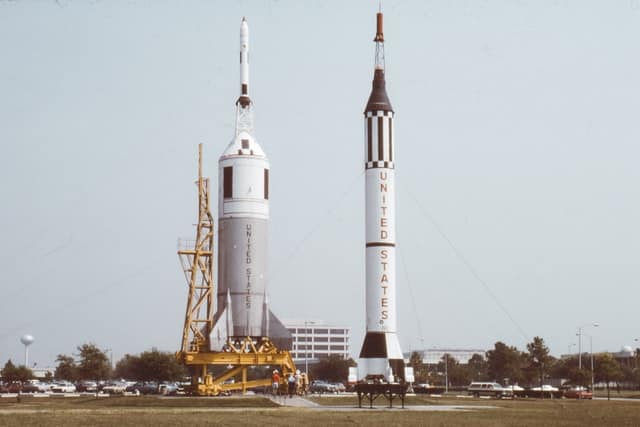With information readily available on the internet, most people are probably aware that rockets can be used for fireworks, weaponry, space exploration and to launch artificial satellites into space. For instance, using rockets for space exploration means that you have to propel them over 62 miles from earth into space. This propulsion requires a lot of fuel.
The reason why rocket fuel is expensive is because of the high combustion needed to create an upward force (thrust) for the rocket to launch upwards. If more fuel is used, more force is generated; greater than the force of gravity. Because a lot of fuel is required for propulsion, its price is usually quite high.
Rockets travel at high speeds. Rockets just like cars increase fuel consumption as the speed increases. This means that to keep the rocket at top speed, a lot of fuel has to be used.
In this article, we are going to discuss the different aspects of rocket fuel such as why it’s so expensive, how much it costs, how much is needed, and what type NASA uses. So read on to find out more. This will surely be an insightful read for you.
Is Rocket Fuel Expensive?
The answer to this question is a resounding yes! Rocket fuel is expensive, otherwise, scientists today wouldn’t be looking for cheaper alternatives to rocket propellants.
The large amounts of fuel needed for the propulsion of rockets out of the earth’s atmosphere make the rocket fuel expensive. Approximately 3.5 million pounds of fuel are used during the launch missions for rockets. Large amounts of fuel increase the weight of the rockets which interfere with the velocity. More fuel is therefore required to carry this added weight into space.
Since rocket fuel is expensive, there have been innovations to try to make rockets that are more fuel-efficient. One type of engine that has been deemed quite promising is the rotating detonation engine. According to experts, this type of engine works differently from the conventional rocket engine.
To reduce the cost of rocket fuel less fuel needs to be used. This means the spacecraft should be built to be as light as possible. The challenge though is that the rocket needs to be stronger to withstand the upward thrust otherwise equipment used in construction is likely to fall apart, leading to even more losses.
There has also been speculation of the invention of greener rocket fuels that might have the potential to reduce the cost of the rocket fuel. However, more research is being done to make this a reality.
How Much Is Rocket Fuel per Gallon?
It’s fascinating how expensive rocket fuel can be. Some people tend to categorize the terms of rocket fuel and ‘propellant’ as one thing. According to NASA’s fact sheet that was published on their website, LOX and LH propellants did cost the space agency approximately $1.65 per gallon. LOH stands for liquid oxygen whereas LH stands for liquid hydrogen.
Rocket fuel can be found in various forms; solid and liquid. Solid rocket fuel is majorly made of aluminum and ammonium perchlorate. On the other hand, liquid fuel consists of liquid hydrogen and liquid oxygen. The mixture of these two fuels causes combustion which results in a thrust that propels the rocket.
With that said let’s delve into some calculations so as to approximate the cost of rocket fuel. Assuming that rocket fuel costs approximately $100 -$120 per ton whereas Oxygen also costs about $100- $120 per ton. Keeping in mind that hydrogen is quite expensive than these two, a typical rocket with 1000 rocket propellant of fuel and oxygen is likely to cost about $100,000. Remember a lot of gallons are required so this number is likely even more. With this huge figure, it’s safe to say that even a gallon of rocket fuel is expensive.
Why Is Rocket Fuel So Expensive?
More than often, people talk about the costs involved in building rockets without acknowledging the fact that rocket fuel is expensive. More attention though is being directed to determining why rocket fuel is expensive.
As mentioned earlier, the huge amount of fuel needed by rockets makes it expensive. Rockets require a lot of fuel to overcome the Earth’s gravity and also be able to reach the velocity it intends to. Most rockets are made of up to three stages. Each stage has its fuel tanks and once the fuel is used up, the stage disintegrates and either burns in space or falls in the ocean/ in areas with less population.
If you go into finer details, you will find out that liquid fuel is quite expensive compared to solid fuel. Liquid fuel rockets have higher specific impulses compared to solid-fuel rockets. Combustion chambers of liquid fuel rockets can be able to withstand both high combustion pressure and temperatures.
Liquid fuel is made up of liquid hydrogen and liquid oxygen and to prove that rocket fuel is quite expensive let’s look at the figures NASA posted after the purchase of the fuel for their space shuttle. You should, however, note that liquid oxygen is a vital component of rocket fuel and without it, no combustion can take place. The space program purchased oxygen for about 67 cents per gallon with a single gallon weighing approximately 4.322kgs. This further gives you $0.16 per kg of liquid oxygen. On the other hand, approximately 384,000 gallons of liquid hydrogen cost around $ 376000.
If you still think rocket fuel isn’t expensive, perhaps you should consider converting the above figures and determine how much of the taxpayer’s money goes into that.
To minimize the costs associated with liquid fuel, rocket industry players have resorted to the use of solid fuels in the initial stages.
How Much Fuel Is Needed for a Rocket?
Extensive research is being made to exactly determine how much fuel is needed to fuel a rocket considering its three stages.
Apart from the rocket engines, rockets have solid rocket boosters (SRBs) which act as a propellant motor. Experts do suggest that during liftoff, the two SRBs use approximately 11,000 pounds of rocket fuel in a second. That averages to about 2 million times the rate at which your car will burn normal fuel. The huge amount of fuel helps generate a thrust of about 5.3 million pounds.
In another instance, NASA’s Saturn V Moon Rocket is known to have used approximately 203,400 gallons – 77,000- liters of kerosene fuel. A further 1.2 million gallons of liquid oxygen was also needed for combustion for the rocket’s initial lift-off stage.
What Type of Fuel Is Used in NASA Rockets?
Even though the use of liquid hydrogen turned out to be a failure in the early stages of NASA’s spaceship program, its significance now has become a signature fuel for the American Space Program. Liquid hydrogen is uniquely known for its light yet powerful properties.
The use of liquid fuel has sparked a debate with some claiming that solid rocket fuel is more superior. The arguments between liquid rocket fuel and solid rocket-fuel gave rise to the differences.
- Liquid rocket fuel is mostly composed of liquid oxygen which acts as an oxidizer when combustion takes place. On the other hand, solid fuel is primarily made up of premixed propellants which also contain an oxidizer.
- Liquid fuels in rockets provide more energy. They are also easier to control. On the other hand, solid fuels produce toxic fumes and need extreme pre-launch operations.
During the early stages, the cryogenic nature of liquid oxygen and hydrogen proved to be of immense challenges. Some of them include;
- Both components are known to evaporate if not insulated from the heat and extreme friction.
- Liquid hydrogen expands quickly; this forced the space ship program to introduce a venting mechanism that prevented the rocket’s fuel tanks from exploding.
- The leaking of liquid hydrogen through the metal pores.
Solving all these challenges required technical expertise in rocket fuel as suggested by the National Advisory Committee for Aeronautics.
What Type of Fuel Is Used in Space Rockets?
The rocket fuel rivalry between solid fuels and liquid fuel has contributed significantly to the shaping of the future of spaceflight. SpaceX’s Aerospace program first developed the main rocket engine in 2012 which heavily relied on kerosene and RP-1 as the rocket fuel. (LOX as an oxidizer)
The recently launched Falcon 9 rocket was SpaceX’s test of the use of liquid fuels. The Aerospace Company resorted to its use due to the propellants’ ability to increase the rocket’s thrust. In 2016, the propellant led to a rocket explosion.
The explosion was a result of remnants of liquid oxygen which had frozen into a solid form. The combustion between the carbon fiber tank and oxygen led to the explosion and thus highlights one of the disadvantages of using liquid rocket fuel.
The dangers of using liquid rocket fuel prompted the use of a hybrid technology amongst rocket crafters; they used both liquid and solid fuels. Both fuels are stored in separate chambers and afterward gradually combined to produce the required lift. Today, rockets experts recommend the use of this hybrid technology due to its simplicity and less expensive nature.
To sum up, both solid and liquid rocket fuels have great advantages. Their importance will be dependent on the particular space rocket organization. In addition to that, the cost of rocket fuels will also add up to the overall costs of the rockets. Since some of the rocket’s stages will either burn or disintegrate, perhaps it’s better if rocket industry players lean towards the use of hybrid fuel technology.

